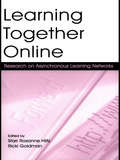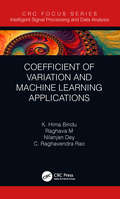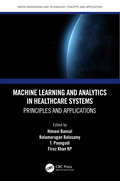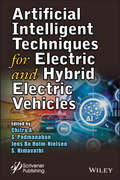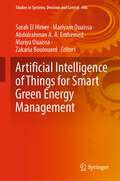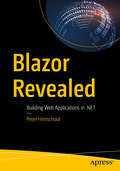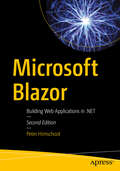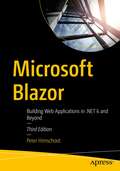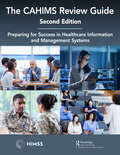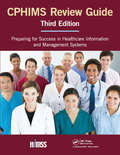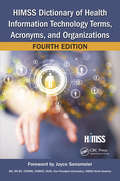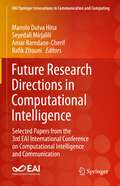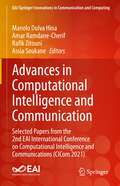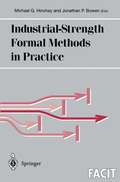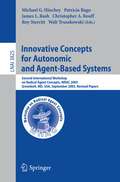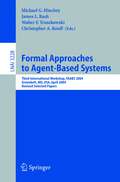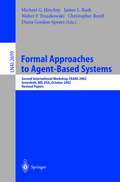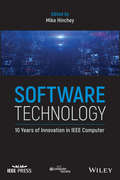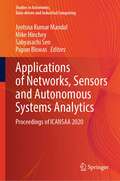- Table View
- List View
Learning Together Online: Research on Asynchronous Learning Networks
by Starr Roxanne Hiltz Ricki GoldmanThis book is about the past and future of research on the effectiveness of learning networks (also known as "e-learning" or "online learning" or "Web-based learning"). Learning networks are groups of people using computer technology, communicating and collaborating online to build knowledge together. Over the past decade there has been an explosion not only of online courses, but also of studies on them. In Learning Together Online: Research on Asynchronous Learning Networks, leading researchers in the field use an integrated theoretical framework, which they call "Online Interaction Learning Theory," to organize what past research shows and where future research is going. It models the variables and processes that are important in determining the relative effectiveness of online learners working to reach a deeper level of understanding by interacting with each other and with the texts under investigation. Now that there have been hundreds of studies and thousands of courses offered online, what does the empirical evidence show? This book addresses the question directly by presenting what is known from research results about how to design and teach courses effectively online, ranging from the organizational context and characteristics of students to learning theories and research design methods. It also provides a research agenda for the next decade. Learning Together Online: Research on Asynchronous Learning Networks is both a textbook for graduate students and a professional reference for faculty teaching online, researchers conducting studies, and graduate students taking courses about learning technologies who need to know the state of the art of research in the area of online learning.
Coefficient of Variation and Machine Learning Applications (Intelligent Signal Processing and Data Analysis)
by K. Hima Bindu Raghava Morusupalli Nilanjan Dey C. Raghavendra RaoCoefficient of Variation (CV) is a unit free index indicating the consistency of the data associated with a real-world process and is simple to mold into computational paradigms. This book provides necessary exposure of computational strategies, properties of CV and extracting the metadata leading to efficient knowledge representation. It also compiles representational and classification strategies based on the CV through illustrative explanations. The potential nature of CV in the context of contemporary Machine Learning strategies and the Big Data paradigms is demonstrated through selected applications. Overall, this book explains statistical parameters and knowledge representation models.
Coefficient of Variation and Machine Learning Applications (Intelligent Signal Processing and Data Analysis)
by K. Hima Bindu Raghava Morusupalli Nilanjan Dey C. Raghavendra RaoCoefficient of Variation (CV) is a unit free index indicating the consistency of the data associated with a real-world process and is simple to mold into computational paradigms. This book provides necessary exposure of computational strategies, properties of CV and extracting the metadata leading to efficient knowledge representation. It also compiles representational and classification strategies based on the CV through illustrative explanations. The potential nature of CV in the context of contemporary Machine Learning strategies and the Big Data paradigms is demonstrated through selected applications. Overall, this book explains statistical parameters and knowledge representation models.
Machine Learning and Analytics in Healthcare Systems: Principles and Applications (Green Engineering and Technology)
by Himani Bansal, Balamurugan Balusamy, T. Poongodi, and Firoz Khan KPThis book provides applications of machine learning in healthcare systems and seeks to close the gap between engineering and medicine. It will combine the design and problem-solving skills of engineering with health sciences, in order to advance healthcare treatment. The book will include areas such as diagnosis, monitoring, and therapy. The book will provide real-world case studies, gives a detailed exploration of applications in healthcare systems, offers multiple perspectives on a variety of disciplines, while also letting the reader know how to avoid some of the consequences of old methods with data sharing. The book can be used as a reference for practitioners, researchers and for students at basic and intermediary levels in Computer Science, Electronics and Communications.
Artificial Intelligent Techniques for Electric and Hybrid Electric Vehicles
by S. Himavathi Jens Bo Holm-Nielsen P. Sanjeevikumar Chitra A.Electric vehicles/hybrid electric vehicles (EV/HEV) commercialization is still a challenge in industries in terms of performance and cost. The performance along with cost reduction are two tradeoffs which need to be researched to arrive at an optimal solution. This book focuses on the convergence of various technologies involved in EV/HEV. The book brings together the research that is being carried out in the field of EV/HEV whose leading role is by optimization techniques with artificial intelligence (AI). Other featured research includes green drive schemes which involve the possible renewable energy sources integration to develop eco-friendly green vehicles, as well as Internet of Things (IoT)-based techniques for EV/HEVs. Electric vehicle research involves multi-disciplinary expertise from electrical, electronics, mechanical engineering and computer science. Consequently, this book serves as a point of convergence wherein all these domains are addressed and merged and will serve as a potential resource for industrialists and researchers working in the domain of electric vehicles.
Artificial Intelligence of Things for Smart Green Energy Management (Studies in Systems, Decision and Control #446)
by Sarah El Himer Mariyam Ouaissa Abdulrahman A. A. Emhemed Mariya Ouaissa Zakaria BoulouardThis book is intended to assist in the development of smart and efficient green energy solutions. It introduces energy systems, power generation, and power demands which able to minimise generation costs, power loss or environmental effects. It proposes cutting-edge solutions and approaches based on recent technologies such as intelligent renewable energy systems (wind and solar). These solutions, applied to different sectors, can provide a solid basis for meeting the needs of both developed and developing countries. The book provides a collection of contributions including new techniques, methods, algorithms, practical solutions and models based on applying artificial intelligence and the Internet of things into green energy management systems. It provides a comprehensive reference for researchers, scholars and industry in the field of green energy and computational intelligence.
Blazor Revealed: Building Web Applications in .NET
by Peter HimschootBuild web applications in Microsoft .NET that run in any modern browser, helping you to transfer your .NET experience and skills to a new environment and build browser-based applications using a robust and type-safe language and runtime. Developing a web site with rich client-side behavior means most developers need to learn a transpiled language like JavaScript or TypeScript. But today you can also develop rich browser applications using the .NET runtime and C# using Blazor. With Blazor you can use all that experience you have amassed over the years, and can use thousands of already existing libraries, right in the browser.Blazor Revealed will allow you to create a rich web site experience in no time. You will learn how to build user interfaces, and present data to a user for display and modification, capturing the user’s changes via data binding. The book shows you how to access a rich library of .NET functionality such as a component model for building a composable user interface, including how to develop reusable components that can be used across many pages and web sites. Also covered is data exchange with a server, giving you access to microservices and database services. Blazor provides a fresh take on web development by eliminating the need for you to learn different languages and frameworks for client- and server-side development. Blazor allows C# and .NET to be used on all sides, providing a robust feature set that is well suited toward scalable, enterprise-level applications. Blazor Revealed gets you started in using this important new toolkit for web application development. What You'll LearnBuild user interfaces and display data for users to editCapture the user’s changes via data bindingTransfer data back and forth between server and clientCommunicate with microservices and database servicesDevelop reusable components and assemble them into bigger componentsUse routing to build single page applications (SPAs)Build Blazor libraries that are reusable across applicationsWho This Book Is ForExperienced .NET developers who want to apply their existing skills to building professional quality, client-side web applications that run in any browser. The book is for web developers who want to step away from JavaScript and its complexities, and instead use a proven technology (.NET) that is robust toward creating enterprise-quality applications that scale and are reliable and that provide good user experience. The book is for intermediate to advanced .NET web developers with no experience using Blazor.
Microsoft Blazor: Building Web Applications in .NET
by Peter HimschootBuild web applications in C# and Microsoft .NET that run in any modern browser. This second edition is updated to work with the release version of Blazor and covers Blazor’s use in creating both server-side and WebAssembly Blazor applications. Developers are able to use all their experience in .NET along with thousands of existing libraries, right in the browser. There is important new coverage in this edition on the new and improved Razor syntax, how to easily validate user input with Blazor validation, and how to build complex interacting components with Cascading Properties and Templated Components. You will learn how to build user interfaces and present data to a user for display and modification, capturing the user’s changes via data binding. The book shows you how to access a rich library of .NET functionality such as a component model for building a composable user interface, including how to develop reusable components that can be used across many pages and websites. Also covered is data exchange with a server, giving you access to microservices and database services. Blazor provides a fresh take on web development by eliminating the need for you to learn different languages and frameworks for client- and server-side development. Blazor allows C# and .NET to be used on all sides, providing a robust feature set that is well suited toward scalable, enterprise-level applications. This book gets you started using this important new toolkit for web application development.What You Will LearnBuild user interfaces and display data for users to editCapture the user’s changes via data bindingTransfer data back and forth between server and clientCommunicate with microservices and database servicesDevelop reusable components and assemble them into bigger componentsUse routing to build single-page applications (SPAs)Build Blazor libraries that are reusable across applicationsWho This Book Is ForExperienced .NET developers who want to apply their existing skills toward building professional-quality, client-side web applications that run in any browser. The book is for web developers who want to step away from JavaScript and its complexities, and instead use a proven technology (.NET) that is robust toward creating enterprise-quality applications that scale and are reliable, that provide good user experience.
Microsoft Blazor: Building Web Applications in .NET 6 and Beyond
by Peter HimschootBuild web applications in C# and Microsoft .NET 6 that run in any modern browser and become a full-stack web developer!. Do all these things using the Microsoft Blazor framework and the techniques shown in this book. New in this edition is coverage of the new and improved Razor syntax, communication with the server using SignalR and/or gRPC, the use of virtualization to load large quantities of data efficiently, deployment and ahead-of-time compilation into WASM, new unit testing features, security using OpenID Connect, and more. Reading this book helps you learn to build user interfaces and present data to a user for display and modification, capturing the user’s changes via data binding. The book shows how to access a rich library of .NET functionality such as a component model for building a composable user interface, including how to develop reusable components that can be used across many pages and websites. Also covered is data exchange with a server using REST, SignalR, and gRPC, giving you access to microservices and database services. Blazor provides a fresh take on web development by eliminating the need for you to learn different languages and frameworks for client- and server-side development. Blazor allows C# and .NET to be used on all sides—both server-side and client-side—providing a robust feature set that is well suited toward scalable, enterprise-level applications. With Blazor you can use all your experience in .NET 6 along with thousands existing libraries, right in the browser. This book gets you proficient using this important toolkit for web application development.What You Will LearnBuild user interfaces and display data for users to editCapture user edits and changes via data bindingTransfer data back and forth between server and clientCommunicate with microservices and database services using REST, SignalR, or gRPCDevelop reusable components and assemble them into bigger componentsUse routing to build single-page applications (SPAs)Build stable and maintainable software using unit testingInternationalize your application to reach more usersSecure your Blazor application with OpenID ConnectWho This Book Is ForExperienced .NET developers who want to apply their existing skills toward building professional-quality, client-side web applications that run in any browser and web developers who want to step away from JavaScript and its complexities, and instead use a proven technology (C# and .NET6) that is robust toward creating enterprise-quality applications that scale and are reliable, and provide a good user experience
The CAHIMS Review Guide: Preparing for Success in Healthcare Information and Management Systems (HIMSS Book Series)
by HIMSSHIMSS’ Certified Associate in Healthcare Information and Management Systems (CAHIMS) certification offers a pathway to careers in health information technology (health IT) for associate-level, emerging professionals, or those who would like to transition to health IT from other industries. The CAHIMS Review Guide, 2nd Edition is the ideal resource for those preparing for the CAHIMS certification exam—or looking for a comprehensive "health IT 101" guide. Content in this updated and revised CAHIMS review guide reflects the new CAHIMS exam content outline. Content is divided into three topic categories: organizational and technology environments; systems analysis, design, selection, implementation, support, maintenance, testing, evaluation, privacy, and security; and leadership and management support. Each chapter includes learning objectives for tracking progress in understanding and articulating the content. Practice exam questions at the end of the book reinforce key concepts explored throughout the book. This book is a comprehensive and timely introduction to healthcare information and management systems. It’s also an invaluable resource for staying current in all aspects of the industry. In addition to sample exam questions, this book includes an overview of the eligibility requirements, testing procedures, and the CAHIMS examination itself.
The CAHIMS Review Guide: Preparing for Success in Healthcare Information and Management Systems (HIMSS Book Series)
by HIMSSHIMSS’ Certified Associate in Healthcare Information and Management Systems (CAHIMS) certification offers a pathway to careers in health information technology (health IT) for associate-level, emerging professionals, or those who would like to transition to health IT from other industries. The CAHIMS Review Guide, 2nd Edition is the ideal resource for those preparing for the CAHIMS certification exam—or looking for a comprehensive "health IT 101" guide. Content in this updated and revised CAHIMS review guide reflects the new CAHIMS exam content outline. Content is divided into three topic categories: organizational and technology environments; systems analysis, design, selection, implementation, support, maintenance, testing, evaluation, privacy, and security; and leadership and management support. Each chapter includes learning objectives for tracking progress in understanding and articulating the content. Practice exam questions at the end of the book reinforce key concepts explored throughout the book. This book is a comprehensive and timely introduction to healthcare information and management systems. It’s also an invaluable resource for staying current in all aspects of the industry. In addition to sample exam questions, this book includes an overview of the eligibility requirements, testing procedures, and the CAHIMS examination itself.
CPHIMS Review Guide: Preparing for Success in Healthcare Information and Management Systems (HIMSS Book Series)
by HimssWhether you're taking the CPHIMS exam, or simply want the most current and comprehensive overview in healthcare information and management systems today - this completely revised and updated third edition has it all. But for those preparing for the CPHIMS exam, this book is an ideal study partner. The content reflects the exam content outline covering healthcare and technology environments; systems analysis, design, selection, implementation, support, maintenance, testing, evaluation, privacy and security; and administration leadership management. Candidates can challenge themselves with the sample multiple choice questions at the end of the book.
CPHIMS Review Guide: Preparing for Success in Healthcare Information and Management Systems (HIMSS Book Series)
by HimssWhether you're taking the CPHIMS exam, or simply want the most current and comprehensive overview in healthcare information and management systems today - this completely revised and updated third edition has it all. But for those preparing for the CPHIMS exam, this book is an ideal study partner. The content reflects the exam content outline covering healthcare and technology environments; systems analysis, design, selection, implementation, support, maintenance, testing, evaluation, privacy and security; and administration leadership management. Candidates can challenge themselves with the sample multiple choice questions at the end of the book.
HIMSS Dictionary of Health Information Technology Terms, Acronyms, and Organizations (HIMSS Book Series)
by HimssThis significantly expanded and newest edition of the bestselling HIMSS Dictionary of Health Information Technology Terms, Acronyms, and Organizations has been developed and extensively reviewed by more than 50 industry experts. The fourth edition of this dictionary serves as a quick reference for students, health information technology professionals and healthcare executives to better navigate the ever-growing health IT field. This valuable resource includes more than 3000 definitions, 30 new organizations and 76 new references. Definitions of terms for the information technology and clinical, medical and nursing informatics fields are updated and included. This fourth edition also includes an acronyms list with cross references to current definitions, new word-search capability, and a list of health IT-related associations and organizations, including contact information, mission statements and web addresses. Academic and certification credentials are also included. HIMSS North America, a business unit within HIMSS, positively transforms health and healthcare through the best use of information technology in the United States and Canada. As a cause-based non-profit, HIMSS North America provides thought leadership, community building, professional development, public policy, and events. HIMSS North America represents 64,000 individual members, 640 corporate members, and over 450 non-profit organizations. Thousands of volunteers work with HIMSS to improve the quality, cost-effectiveness, access, and value of healthcare through IT. HIMSS Vision Better health through information technology. HIMSS Mission Globally, lead endeavors optimizing health engagements and care outcomes through information technology.
HIMSS Dictionary of Health Information Technology Terms, Acronyms, and Organizations (HIMSS Book Series)
by HimssThis significantly expanded and newest edition of the bestselling HIMSS Dictionary of Health Information Technology Terms, Acronyms, and Organizations has been developed and extensively reviewed by more than 50 industry experts. The fourth edition of this dictionary serves as a quick reference for students, health information technology professionals and healthcare executives to better navigate the ever-growing health IT field. This valuable resource includes more than 3000 definitions, 30 new organizations and 76 new references. Definitions of terms for the information technology and clinical, medical and nursing informatics fields are updated and included. This fourth edition also includes an acronyms list with cross references to current definitions, new word-search capability, and a list of health IT-related associations and organizations, including contact information, mission statements and web addresses. Academic and certification credentials are also included. HIMSS North America, a business unit within HIMSS, positively transforms health and healthcare through the best use of information technology in the United States and Canada. As a cause-based non-profit, HIMSS North America provides thought leadership, community building, professional development, public policy, and events. HIMSS North America represents 64,000 individual members, 640 corporate members, and over 450 non-profit organizations. Thousands of volunteers work with HIMSS to improve the quality, cost-effectiveness, access, and value of healthcare through IT. HIMSS Vision Better health through information technology. HIMSS Mission Globally, lead endeavors optimizing health engagements and care outcomes through information technology.
Future Research Directions in Computational Intelligence: Selected Papers from the 3rd EAI International Conference on Computational Intelligence and Communication (EAI/Springer Innovations in Communication and Computing)
by Manolo Dulva Hina Seyedali Mirjalili Amar Ramdane-Cherif Rafik ZitouniThis book presents select papers from 3rd EAI International Conference on Computational Intelligence and Communications (CICom 2022). The papers reveal recent advances in the broader domains of Computational Intelligence including (1) automation, control, and intelligent transportation system, (2) big data, internet of things, and smart cities, (3) wireless communication systems and cyber security and (4) human/brain-computer interfaces, and image and pattern recognition. The book demonstrates complex real-world problems in which mathematical or traditional modellings are not the preferred solution, hence alternative solutions are needed. This collection of applications demonstrates the important advances in computational intelligence. The book chapters’ present various ideas that will benefit researchers, graduate students and engineers in this domain.
Advances in Computational Intelligence and Communication: Selected Papers from the 2nd EAI International Conference on Computational Intelligence and Communications (CICom 2021) (EAI/Springer Innovations in Communication and Computing)
by Manolo Dulva Hina Amar Ramdane-Cherif Rafik Zitouni Assia SoukaneThis book presents select papers from the 2nd EAI International Conference on Computational Intelligence and Communications (CICom 2021). The papers reveal recent advances in the broader domains of Computational Intelligence including (1) automation, control, and intelligent transportation system; (2) big data, Internet of Things, and smart cities; (3) wireless communication systems and cyber security and; (4) human/brain-computer interfaces, and image and pattern recognition. The book demonstrates complex real-world problems in which mathematical or traditional modelling are not the preferred solution and posits alternative solutions. This collection of applications demonstrates the important advances in computational intelligence. The chapters present various ideas that will benefit researchers, graduate students and engineers in this domain.
Industrial-Strength Formal Methods in Practice (Formal Approaches to Computing and Information Technology (FACIT))
by Michael G. Hinchey Jonathan P. BowenIndustrial Strength Formal Methods in Practice provides hands-on experience and guidance for anyone who needs to apply formal methods successfully in an industrial context. Each chapter is written by an expert in software engineering or formal methods, and contains background information, introductions to the techniques being used, actual fragments of formalised components, details of results and an analysis of the overall approach. It provides specific details on how to produce high-quality software that comes in on-time and within budget. Aimed mainly at practitioners in software engineering and formal methods, this book will also be of interest to the following groups; academic researchers working in formal methods who are interested in evidence of their success and in how they can be applied on an industrial scale, and students on advanced software engineering courses who need real-life specifications and examples on which to base their work.
Innovative Concepts for Autonomic and Agent-Based Systems: Second International Workshop on Radical Agent Concepts, WRAC 2005, Greenbelt, MD, USA, September 20-22, 2005, Revised Papers (Lecture Notes in Computer Science #3825)
by Michael G. Hinchey Patricia Rago James L. Rash Christopher A. Rouff Walt TruszkowskiThis book constitutes the thoroughly refereed post-proceedings of the Second International Workshop on Radical Agent Concepts, WRAC 2005, held in Greenbelt, MD, USA in September 2005. The 27 full papers presented are fully revised to incorporate reviewers' comments and discussions at the workshop. Topics addressed are social aspects of agents, agent architectures, autonomic systems, agent communities, and agent intelligence.
Formal Approaches to Agent-Based Systems: Third International Workshop, FAABS 2004, Greenbelt, MD, April 26-27, 2004, Revised Selected Papers (Lecture Notes in Computer Science #3228)
by Michael G. Hinchey James L. Rash Walter F. Truszkowski Christopher A. RouffThe 3rd Workshop on Formal Approaches to Agent-Based Systems (FAABS-III) was held at the Greenbelt Marriott Hotel (near NASA Goddard Space Flight Center) in April 2004 in conjunction with the IEEE Computer Society. The first FAABS workshop was help in April 2000 and the second in October 2002. Interest in agent-based systems continues to grow and this is seen in the wide range of conferences and journals that are addressing the research in this area as well as the prototype and developmental systems that are coming into use. Our third workshop, FAABS-III, was held in April, 2004. This volume contains the revised papers and posters presented at that workshop. The Organizing Committee was fortunate in having significant support in the planning and organization of these events, and were privileged to have wor- renowned keynote speakers Prof. J Moore (FAABS-I), Prof. Sir Roger Penrose (FAABS-II), and Prof. John McCarthy (FAABS-III), who spoke on the topic of se- aware computing systems, auguring perhaps a greater interest in autonomic computing as part of future FAABS events. We are grateful to all who attended the workshop, presented papers or posters, and participated in panel sessions and both formal and informal discussions to make the workshop a great success. Our thanks go to the NASA Goddard Space Flight Center, Codes 588 and 581 (Software Engineering Laboratory) for their financial support and to the IEEE Computer Society (Technical Committee on Complexity in Computing) for their sponsorship and organizational assistance.
Formal Approaches to Agent-Based Systems: Second International Workshop, FAABS 2002, Greenbelt, MD, USA, October 29-31, 2002, Revised Papers (Lecture Notes in Computer Science #2699)
by Michael G. Hinchey James L. Rash Walter F. Truszkowski Christopher Rouff Diana Gordon-SpearsThe idea of a FAABS workshop was first conceived in 1998 at the NASA Goddard Space Flight Center, while the Agent Technology Development Group in the Advanced Architectures and Automation Branch (Code 588) was developing a prototype agent community to automate satellite ground operations. While developing this system, several race conditions arose within and between agents. Due to the complexity of the agents and the communications between them, it was decided that a formal approach was needed to specify the agents and the communications between them, so that the system could be checked for additional errors. A formal model of the inter-agent communications was developed, with the expectation that this would enable us to find more errors. Success in this convinced us of the importance of using formal methods to model agent-based systems. To share our own experiences and to learn how others were approaching these issues, we decided to hold a workshop on formal methods and agent-based systems. The response was overwhelming. The result was the first FAABS workshop, which was held at the NASA Goddard Space Flight Center. Posters, paper presentations, panels, and an invited talk by J Moore stimulated much discussion and subsequent collaboration.
Agent Technology from a Formal Perspective (NASA Monographs in Systems and Software Engineering)
by Michael Hinchey James Rash Walt Truszkowski Diana F. Gordon-SpearsSoftware Technology: 10 Years of Innovation in IEEE Computer
by Mike HincheyA comprehensive collection of influential articles from one of IEEE Computer magazine’s most popular columns This book is a compendium of extended and revised publications that have appeared in the “Software Technologies” column of IEEE Computer magazine, which covers key topics in software engineering such as software development, software correctness and related techniques, cloud computing, self-managing software and self-aware systems. Emerging properties of software technology are also discussed in this book, which will help refine the developing framework for creating the next generation of software technologies and help readers predict future developments and challenges in the field. Software Technology provides guidance on the challenges of developing software today and points readers to where the best advances are being made. Filled with one insightful article after another, the book serves to inform the conversation about the next wave of software technology advances and applications. In addition, the book: Introduces the software landscape and challenges associated with emerging technologies Covers the life cycle of software products, including concepts, requirements, development, testing, verification, evolution, and security Contains rewritten and updated articles by leaders in the software industry Covers both theoretical and practical topics Informative and thought-provoking throughout, Software Technology is a valuable book for everyone in the software engineering community that will inspire as much as it will teach all who flip through its pages.
Software Technology: 10 Years of Innovation in IEEE Computer
by Mike HincheyA comprehensive collection of influential articles from one of IEEE Computer magazine’s most popular columns This book is a compendium of extended and revised publications that have appeared in the “Software Technologies” column of IEEE Computer magazine, which covers key topics in software engineering such as software development, software correctness and related techniques, cloud computing, self-managing software and self-aware systems. Emerging properties of software technology are also discussed in this book, which will help refine the developing framework for creating the next generation of software technologies and help readers predict future developments and challenges in the field. Software Technology provides guidance on the challenges of developing software today and points readers to where the best advances are being made. Filled with one insightful article after another, the book serves to inform the conversation about the next wave of software technology advances and applications. In addition, the book: Introduces the software landscape and challenges associated with emerging technologies Covers the life cycle of software products, including concepts, requirements, development, testing, verification, evolution, and security Contains rewritten and updated articles by leaders in the software industry Covers both theoretical and practical topics Informative and thought-provoking throughout, Software Technology is a valuable book for everyone in the software engineering community that will inspire as much as it will teach all who flip through its pages.
Applications of Networks, Sensors and Autonomous Systems Analytics: Proceedings of ICANSAA 2020 (Studies in Autonomic, Data-driven and Industrial Computing)
by Mike Hinchey Papun Biswas Jyotsna Kumar Mandal Sabyasachi SenThis book presents high-quality research papers presented at International Conference on Applications of Networks, Sensors and Autonomous Systems Analytics (ICANSAA 2020), held during December, 11 – 12, 2020, at JIS College of Engineering, Kalyani, West Bengal, India. The major topics covered are cyber-physical systems and sensor networks, data analytics and autonomous systems and MEMS and NEMS with applications in biomedical devices. It includes novel and innovative work from experts, practitioners, scientists, and decision-makers from academia and industry.
